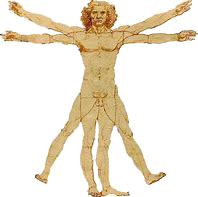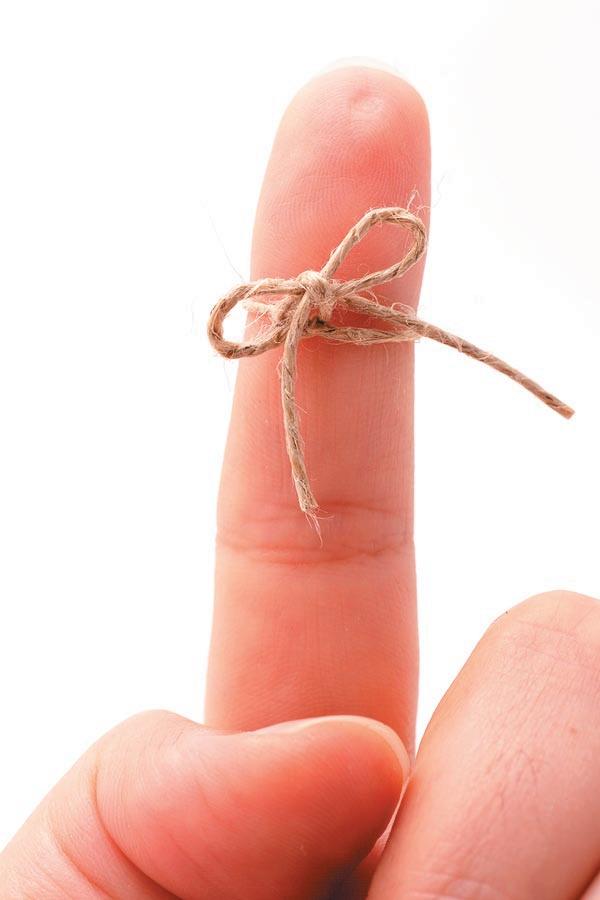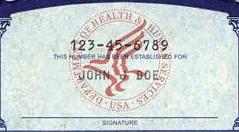















by Janet Spencer
People have for ages pondered the rhetorical question: “If a tree falls in the forest and no one is there to hear it, did it actually make any sound?” This philosophical debate centers around the question: “What is sound?” While Tidbits won't try to solve that age-old mystery for you, we'll try to provide enough facts on the subject to let you draw your own conclusions.
WHAT IS SOUND?
• In simple terms, sound is an audible vibration which travels through the air until it strikes an intricately designed tiny set of mechanisms deep in the ear canal. These vibrations are instantly translated into electrical impulses which are interpreted by the brain and perceived as sound.
• So is sound the vibrations of the tree falling in the forest, or is sound the electrical impulses received by the brain? On a more deeply philosophical level, does sound -- or anything -- still exist if no one is there to perceive it?
Ears: Turn to page 3











(Answers on page 16)





1. LANGUAGE: What does the Latin prefix “audio-” mean in English?
2. TELEVISION: Gladys Kravitz is the annoying neighbor in which TV comedy?
3. ANATOMY: About how many taste buds does the average human tongue have?
4. GEOGRAPHY: The Brandenburg Gate is in which European capital city?
5. HISTORY: Who was the leader of the Soviet Union during WWII?
6. MOVIES: Which movie features the line “I’m the king of the world!”?
7. MYTHOLOGY: What is the name of the Egyptian sun god?
8. LITERATURE: “The Great Gatsby” is set in which U.S. city?
9. MONEY: What is the basic currency of Poland?
10. FOOD & DRINK: Which country is associated with the side dish kimchi?

"Fearfully

• Heinrich Hertz was the German physicist who proved the existence of electromagnetic waves. Today “Hertz” (Hz) measures the pitch of sound by measuring the vibrational frequency of sound waves. A single Hertz is one cycle per second: the fewer cycles, or lower the frequency, the lower the note. The more cycles, or higher the frequency, the higher the note.
• Most humans are able to hear between 20 and 20,000 Hz but our hearing is most sensitive between 2,000 and 5,000 Hz.
• The lowest note on a large church organ is about 32 Hz. Middle C, the middle note on a piano, is 262 Hz. The highest note a soprano singer can reach is around 1,000 Hz.
• Frequencies too high to hear are called ultrasonic, while frequencies too low to hear are called infrasonic.
• Decibel level (dB) measures how loud a sound is. When Alexander Graham Bell invented the telephone, signal frequencies were sent over wires. The longer the wire, the more the signals dissipated. Later, when the telephone company needed a way to measure how much sound was fading, the decibel was invented. It was named after the telephone’s inventor shortly after he died in 1922. The scale is logarithmic, meaning that an 80 dB sound is not twice as loud as a 40 dB sound, but is instead 10,000 times louder.
• You can clearly hear your car radio while you're parked, but while on the highway you turn the volume up to hear it over the road noise. This is because sound levels need to be about 10 decibels louder than background noise in order to be heard. It's called signal-to-noise ratio. When the signal-to-noise ratio is too low, such as in a noisy bar or crowded party, no signals get through to your brain because they are overwhelmed by the extraneous noise.
• Sounds over 85 dB can damage human hearing with repeated exposure. It only takes a single
exposure to a too-loud sound, such as a shotgun blast, to permanently damage hearing. Such sharp and loud noises harm the hairs in the cochlea, which can never be repaired. This type of damage is the main cause of hearing loss, though ear infections, severe changes in air pressure and brain injuries also can commonly become causes of hearing loss.
• As humans age, the tiny sensitive hairs in the cochlea begin to deteriorate, often leading to hearing loss.
• Age is the biggest factor in hearing loss among adults, with hearing usually beginning to decline between the ages 60 and 69. About 42% of those aged 50 or older have hearing loss, increasing to about 71% of people aged 70 or more. Men are almost twice as likely as women to experience hearing loss, though women begin to close the gap after age 70.
• The perception of high frequencies almost always are the first to disappear with agerelated hearing loss.
• The medical term for age-related hearing loss is “presbycusis.” It comes from the German word “presby” meaning “elderly” along with “akousis” (acoustic) meaning “hearing.” The same root gives us the Presbyterian church which is governed by a group of “elders.”
• About three out of every 1,000 children in the U.S. are born with some hearing loss in one or both ears.
• A newborn baby’s ears are still developing at birth, but respond best to high-pitched voices.
• Children with normal hearing in both ears generally process sound and perform auditory tasks better in their right ear until puberty.
• According to a study published in “Science” magazine, we hear music better with our left ear, while our right ear is more attuned to speech.
• Modern hearing aid technology has improved markedly over the past fifteen years.


Week of August 18, 2024
Ears: (from page one)
• To consider this question, let’s discuss sound, and hearing. Here’s a brief and simplified explanation of how the human brain would listen to that tree falling in the forest.
HOW IT WORKS
• What is sound, and how do we hear? In simple terms: vibrations in the air are turned into pressure waves in a fluid, which are transformed into electrical impulses, that are translated and interpreted by the brain. Here are the basics about how the system works:
• The ear is a uniquely-shaped flap of skin that is perfectly designed to funnel sound waves into the ear canal. It’s the right shape for catching the frequencies of the human voice. The weird contours break up incoming sound, allowing you to tell if it came from above or below, behind or in front. Because you have two ears spaced several inches apart, you hear sounds from two slightly different angles which allows you to pinpoint exactly where the sound originated. Stereo.
• Once they reach the ear, sound waves must first be amplified, then turned into electrical signals, before being sent to the brain to be translated. All this happens in the three chambers of the ear.
tympanic membrane, and the middle ear is called the tympanic cavity, from the Latin word for drum. The eardrum is about half the size of a dime.
• Inside the hollow chamber of the middle ear, a tiny delicate bone called the malleus rests against the eardrum. The name “malleus” comes from the Latin word for hammer, from which we also get mallet and maul. The malleus is commonly called the hammer.
• When musicians bang on a drum, the drumsticks hit the membrane stretched over the top of the drum, causing it to vibrate. However, in the human ear it’s backwards: the eardrum vibrates when sound waves hit it. The handle of the hammer picks up those vibrations and the head of the hammer passes them on to the next bone: the incus.
• “Incus” is Latin for anvil, which is the common name for this middle bone. The anvil further amplifies the sound waves and passes them onto the third bone in the middle ear, the stapes.

• Sound waves travel through the inch-long ear canal and encounter the eardrum, the seal stretched taut over the air-tight chamber of the middle ear. The eardrum is also called the


study showed that some of the most unpleasant noises to the human ear include fingernails against a blackboard, a baby crying, an electric drill, rusty swing chains, a person retching, and two pieces of styrofoam rubbing together.
• The stapes (pronounced “stay-peas”) is also called the stirrup because of its shape. Its name comes from the Latin word meaning “a stand” or “to support” like the tripod stand supports a microphone.
• These three bones in the middle ear -- the hammer, the anvil, and the stirrup -- are the tiniest bones in the body. The stirrup is the smallest of them all, about one-tenth of an inch long. All three bones together are collectively called the ossicles, meaning “tiny bones.” The name comes from the Greek “osteon” meaning “bone,” from which we also get “osteoporosis” meaning “porous bones.”
• The stirrup taps against the “oval membrane” which is the water-tight entrance to the part of the inner ear called the cochlea. The cochlea, pronounced “COKE-leah”, is an inch-long fluid-filled tube coiled into a tight spiral the size of a pea. “Cochlea” comes from the Latin word for snail shell, which it resembles. When the stirrup drums against the oval membrane, the vibrations travel through the fluid in the cochlea in a series of corresponding waves.
• Clumps of tiny hairs inside the cochlea called “stereocilia” (literally meaning “solid hair”)
ride the waves, like seaweed in the surf. Different types of hairs are sensitive to different vibrational frequencies. The hairs at the widest part of the “snail shell” of the cochlea pick up the tight fast waves that result from the highest pitched sounds, and the hairs at the narrowest apex of the spiral react to the longer and lowest vibrations.

• The movements of these hairs cause electrically charged ions to collect at the top of the hairs. The ions flow downward to the bottom of the hair cells, where they stimulate the formation of neurotransmitters. The neurotransmitters then follow auditory nerves to the brain to be interpreted.
• When the electrical signals reach the brain,
Ears: Turn to page 15










By Lucie Winborne
* After 10 minutes of looking at yourself in a mirror in a dimly lit room, your bored brain will distort your reflection, triggering the appearance of imaginary monsters such as “Bloody Mary.”
* In 1895, there were only two cars in the entire state of Ohio ... and they still ended up crashing into each other.
* The record for most passengers on an airplane was set in 1991 when 1,086 Ethiopian Jews were evacuated to Jerusalem on a Boeing 747. However, the plane landed with 1,088 passengers, as two babies made their earthly debut during the flight.
* Pineapples were a status symbol in 18th century England. In fact, they were so expensive that you could rent them by the night and take them to parties with you.
* In the first quarter after Covid lockdowns, lipstick sales shot up nearly 50%.
* The Apollo 11 astronauts had to go through customs upon their return to Earth and declare moon rocks, moon dust and other lunar samples, according to the form signed by all three and filed at the Honolulu Airport in Hawaii on July 24, 1969.
* Bella and Edward’s relationship in the “Twilight” book and film series meets all 15 criteria set by the National Domestic Violence Hotline for being in an abusive relationship.
* An estimated 10% of Europeans are immune to HIV infection because they have an ancestor who survived bubonic plague.
***
Thought for the Day: “It isn’t what you have, or who you are, or where you are, or what you are doing that makes you happy or unhappy. It is what you think about.” -- Dale Carnegie



by Mary Hunt


ters and use apps that alert you to deals and discounts.
Money’s tight, and time is ticking. So here’s my top-notch advice to keep back-toschool clothes shopping from draining your wallet. First things first, set your budget. Seriously, how much cash (not credit) do you have for school clothes? Write that number down. Next, figure out needs. Each kid has different requirements. Little boys and older daughters? Totally different wardrobes. Split the budget accordingly. Follow these tips and ideas to stretch your budget as well and far as possible.

by Mary Hunt
INVENTORY CHECK
Take stock of what you already have. Go through last year’s supplies and clothes to see what’s still usable to avoid buying duplicates.
SPREAD IT OUT
It no longer makes sense to purchase an entire year’s school wardrobe this early in the school year. Kids grow! Even more important, consider there will be healthy sales after Christmas, followed by spring sales too. Pacing your shopping relieves back-to-school shopping and eases the financial outlay.
SCHOOL DRESS CODES
Your school may have one, so revisit it to see if anything has changed. Or if you’re switching schools, definitely know what it is. You don’t want to blow your budget on clothes that won’t pass the school’s standards.
START OFF WITH SHOES
There’s nothing like fresh kicks to get the kids pumped for school. Shoes have this magical way of making last year’s outfits feel new again.
SHOP SUMMER SALES
Even though the biggest sales at Amazon, Best Buy, Target and Walmart happened last month, don’t worry -- there are still plenty of chances to find great discounts. Back-to-school sales continue well into September, so you have lots of time to score deals. Plus, Labor Day will bring even more discounts, especially on summer items. Keep an eye out and have your shopping list ready to take advantage of these sales.
Of the 45 states that collect sales tax, more than a dozen offer tax-free holidays during the summer. It’s a great time to stock up, but remember that each state has its own rules, so be sure to check on yours. Some limit how much you can buy tax-free, others specify which items qualify, and they all schedule these holidays at different times.
Organize a clothing swap with friends, family or neighbors. It’s a great way to get “new” clothes without spending a dime.
Keep an eye out for back-to-school sales, and collect coupons. Sign up for store newslet-
For supplies like pencils, notebooks and folders, buy in bulk. Right now office supply stores like Staples and Office Depot have school supplies on sale at prices we won’t see again until this time next year -- crayons, notebooks and pencils, to name a few, are as low as 35 cents online and in store. At these loss-leader prices, savvy shoppers will load up with enough to last the rest of the year.
Check out online marketplaces like eBay, Facebook Marketplace, or even local buy/sell/ trade groups. You can find gently used clothes and supplies at a fraction of the cost.
Don’t underestimate thrift stores and consignment shops. They often have great deals on clothes, sometimes even brand-new items with tags still on them.
Make a list of must-haves versus nice-tohaves. Prioritize essentials like uniforms, shoes and basic supplies, then fill in with extras as your budget allows.
Invest in a durable backpack that can last a few years. Look for ones with sturdy straps and plenty of compartments. Quality over quantity here can save money in the long run.
With these tips, you’ll be able to get your kids ready for school efficiently and economically, ensuring they have everything they need without unnecessary stress.
Mary invites you to visit her at EverydayCheapskate.com, where this column is archived complete with links and resources for all recommended products and services. Mary invites questions and comments at https://www.everydaycheapskate. com/contact/, “Ask Mary.” This column will answer questions of general interest, but letters cannot be answered individually. Mary Hunt is the founder of EverydayCheapskate.com, a frugal living blog, and the author of the book “Debt-Proof Living.”
COPYRIGHT 2024 CREATORS.COM

• About 56% of everything that’s typed on a standard QWERTY keyboard is typed with the left hand. That is the side that contains the most commonly used letters in English including E, A, R, T, and S.

Here's some fast facts for our faithful followers looking for fodder to feed their appetite for frivolous factoids to foist on their friends.
• Rubber bands last longer if they are refrigerated, which prevents the polymers in the rubber from breaking down so quickly.
• The word “Samsung” is a translation of the Korean phrase meaning “three stars.”
• In the movie “Pulp Fiction” all the clocks are set to 4:20.
• The British pound is the oldest currency in the world, having been used for 1,200 years.
• An ostrich’s eye, which is about the size of a billiard ball, is bigger than its brain.
• The eyes of a giant squid are the largest in the world, being the size of a soccer ball.
• If you add up all the numbers on a roulette wheel, the total equals 666.
• The 118 ridges around the edge of a dime make it harder to counterfeit.


through
and consultation with real estate professionals. The new rule goes into effect on August 17, 2024. If you would like more information on this rule as published by the National Association of Realtors (NAR), please call or email us and We will be happy to provide it to you. Next week, we will go over how this new rule affects buyers, as they will now be required to sign agreements with their agent prior to being shown a home.

• Japan has the highest number of vending machines per capita, averaging 23 per person.
• “Tongue twisters” in American Sign Language are called “finger fumblers.”
• Minnie Mouse’s real first name is Minerva; “Minnie” is just a nickname.
• All of Santa’s reindeers are female, including Rudolph. Male reindeer shed their antlers at the beginning of December whereas female reindeer hang on to them through the spring.
• A “jiffy” is equal to 1/100th of a second.
• Adolf Hitler’s nephew William Hitler fled to the U.S. from Germany and joined the U.S. Navy.
• It’s impossible to hum while holding your nose closed.
• Over the past century, “Mary” and “James” have consistently been the most common first names throughout the English-speaking world.
• Human eyeballs remain the same size from birth until death. This is one thing that makes babies so cute, because their eyes are so large in proportion to their face.
• Blue-eyed people have a higher tolerance rate for alcohol.
• Pigeons can’t fart, so they poop frequently.
• Cap’n Crunch’s full name is Horatio Magellan Crunch. His ship is called the S.S. Guppy.
• The most widely printed book in the world is the IKEA catalog, with 200 million copies circulated worldwide each year. This surpasses the Bible.
• Crocodiles are one of the planet’s oldest living creatures with the species dating back through millennia. Their ability to go long periods without food is helpful.
• Three Musketeer candy bars used to come in three breakable pieces: chocolate, vanilla, and strawberry-flavored.
• There are more than 6,000 species of grass worldwide.
• The “funny bone” in the elbow is actually the ulnar nerve which is responsible for sensations in the ring finger and pinky finger.
• Pineapples take their name from their



resemblance to pine cones.
• “Kummerspeck” is a German word for weight gained during emotional eating. It translates to “grief bacon.”
• Studies have shown that hot water does not clean any better than cold water does.
• Kangaroos never stop growing from birth until they die. They are the world’s largest marsupials.









by Dana Jackson

Q: Did Cameron Diaz completely retire from acting? The last thing I remember her in was the musical “Annie.” Is she ever coming back? -- E.M.
A: A-list actress Cameron Diaz announced her retirement from professional acting in 2018, four years after the movie “Annie” came out, which was sadly considered a box-office bomb. She devoted the next several years to life with her family and appeared not to have any plans to work in Hollywood again.

But in 2023, she returned with a new project, a film with Jamie Foxx (her co-star from “Annie”) titled “Back in Action.” While filming in Atlanta, Foxx collapsed on the set and endured a lengthy hospitalization. It was touch and go for a while, but Foxx fortunately survived. Filming resumed earlier this year, and “Back in Action” is scheduled to be released on Netflix in November.
Diaz is continuing to build her filmography with “Outcome,” a film written by, directed by and starring Jonah Hill (“Moneyball”). She will follow this with voicing the role of Princess Fiona again in “Shrek 5.” After that, Diaz might want to take an-
other break, but if not, we’ll be thrilled to see her back on the big and small screens.
***
Q: I recently watched the movie “Queenpins” on Netflix, starring Kristen Bell. Is the movie based on a true story, and was one of them really a former Olympian? -- K.L.
A: Yes and no. “Queenpins,” a buddy comedy that “takes coupon clipping to a criminal level,” according to Entertainment Weekly, is loosely based on a scam started by three women in Arizona who sold counterfeit coupons to purchasers in bulk. The fraudulent coupons looked so authentic that cashiers would override their registers, allowing them to go through. The manufacturers apparently suffered losses of hundreds of millions of dollars, according to EW.
None of the characters in the movie were exactly based on the real-life perpetrators or those involved in the investigation. Kristen Bell and Kirby Howell-Baptiste, who both starred in the NBC comedy series “The Good Place,” played the fictional characters of a former Olympic gold medalist and a wannabe influencer, who both become counterfeiters. Singer-songwriter Bebe Rexha co-starred as a computer hacker, alongside Vince Vaughn (“Bad Monkey”) who portrayed a postal officer.
***
Q: When is “Chicago Med” returning with new episodes? Are there any big changes in the cast? -- F.W.
A: NBC’s “Chicago Med” returns for its 10th season on Wednesdays beginning Sept. 25 at 8 p.m. ET, followed by “Chicago Fire” and “Chicago P.D.” on the same night. Dominic Rains, who played Dr. Crockett Marcel, has exited the show after five seasons, paving the way for two new char-
acters. Sarah Ramos (“Parenthood”) and Darren Barnet (“Never Have I Ever”) joined the medical team as physicians.
Meanwhile, season 12 of “Chicago P.D.” will welcome Toya Turner (“New Amsterdam”) as a new officer, and Dermot Mulroney (“My Best Friend’s Wedding”) will debut as the new chief on “Chicago Fire,” following Eammon Walker’s departure last season.
* * *
Send me your questions at NewCelebrityExtra@gmail.com, or write me at KFWS, 628 Virginia Drive, Orlando, FL 32803. (c) 2024 King Features Synd., Inc.


When you patronize Tidbits advertisers, You help support The tidbits paper!

Tell them you saw their ad in Tidbits!
You read it in tidbits!
Tell the advertisers you saw their ad in Tidbits! Remember to TELL OUR ADVERTISERS YOU SAW THEIR AD IN TIDBITS! (Tidbits wouldn't be possible without them)



It’s so simple! In just 10 minutes you can make delicious frozen yogurt by blending your favorite frozen fruit with plain yogurt! And it’s lowfat!
12 ounces frozen strawberries, cherries or peaches (about 2 3/4 cups), or 10 ounces frozen raspberries (about 2 1/3 cups)
1 container (8 ounces) plain low-fat yogurt
1/2 cup sugar
1 tablespoon fresh lemon juice
1/8 teaspoon almond extract
1. In food processor, with knife blade attached, blend frozen fruit until fruit resembles finely shaved ice, stopping processor occasionally to scrape down sides. If fruit is not finely shaved, dessert will not be smooth.
2. Add yogurt, sugar, lemon juice and almond extract, and process just until mixture is smooth and creamy, scraping down sides occasionally. Serve immediately. Or, spoon into freezer-safe containers and freeze to serve later; let stand at room temperature 10 minutes to soften slightly before serving. Makes about 2 1/2 cups.
TIP: If you want to freeze fresh fruit yourself, spread a single layer of whole berries, pitted cherries, peeled and sliced peaches, nectarines or plums, or melon chunks in 15 1/2-by-10 1/2inch jelly-roll pan; freeze until firm. When frozen, place fruit in freezer-weight self-sealing plastic bag and return to freezer to use within three months.
Each serving: About 130 calories, 1g total fat (1g saturated), 3g protein, 29g carb., 1g fiber, 3mg cholesterol, 35mg sodium.

A satisfying meal made with sauteed onion and red pepper baked in an egg-andpasta custard. If you have leftover spaghetti in the fridge, use 1 cup of it instead of the cooked capellini. Serve with a green salad, our Spicy Tomato Dressing and a chunk of hearty peasant bread.
2 ounces (about 1/2 cup) capellini or angel hair pasta, broken into pieces
2 teaspoons olive oil
1 small onion, thinly sliced
1 small red pepper, diced
6 large egg whites*
2 large eggs
1/3 cup grated Parmesan cheese
1/4 cup fat-free (skim) milk
1/2 teaspoon salt
1/4 teaspoon hot pepper sauce
1. In 2-quart saucepan, heat 3 cups water to boiling over high heat. Add pasta, and cook 2 minutes or just until tender. Drain and set aside.
2. Meanwhile, heat oven to 425 F. In nonstick 10-inch skillet with heat-safe handle, heat olive oil over medium heat. Add onion and red pepper, and cook, stirring frequently, until vegetables are tender, about 7 minutes.
3. In large bowl, with wire whisk or fork, beat egg whites, whole eggs, Parmesan, milk, salt and hot pepper sauce; stir in pasta. Pour egg mixture over onion mixture; cover, and cook 3 minutes or until set around the edge. Uncover skillet, and place in oven. Bake 6 minutes longer, or until frittata is set in center.
4. To serve, invert frittata onto serving plate and cut into wedges. Serves 4.
*Or, use powdered egg whites, reconstituted following package directions. Powdered egg whites are available in the baking section of most
supermarkets.
Each serving: 190 calories, 8g total fat (3g saturated), 113mg cholesterol, 545mg sodium, 15g total carbohydrate, 15g protein.
For thousands of triple-tested recipes, visit our website at www.goodhousekeeping.com/food-recipes/. (c) 2024 Hearst Communications, Inc.
All rights reserved















8/18 Bad Poetry Day
8/19 National Aviation Day
8/20 National Radio Day
8/21 National Senior Citizens Day
8/22 Be Someone's Angel Day
8/23 Cuban Sandwich Day
8/24 William Wilberforce Day



By Matthew Margolis
A dognapped chorkie, a $10,000 reward and a promise not to prosecute. All of this led me to wonder: Chorkie?
A chorkie is a dash of Chihuahua and a dollop of Yorkshire terrier -- in other words, a mixed breed, a mongrel... a mutt.
One evening in June in Concord, Calif., Debby Brown and her boyfriend stepped into a local eatery for some takeout, leaving Lexi the chorkie in Brown’s locked car with the air conditioner running. Moments later they returned to find a broken car window and a missing dog.
Brown and her boyfriend posted fliers around town and notices online offering a $10,000 cash reward for the safe return of Lexi, no questions asked. After several false alarms, Brown received a text message on Sunday that included a photo of Lexi. She told CBS News that she “knew it was Lexi the moment she got the text.”
The rest of the story reads as though Benji had guest-starred in an episode of “The No. 1 Ladies’ Detective Agency.” Brown’s boyfriend agreed to meet the senders of the text message in a Petco parking lot early Monday morning. Concerned for her safety, he told Brown to stay home. At Petco, the boyfriend swapped the cash for the dog, and mum’s been the word ever since from both he and Brown. After all, a promise is a promise.
As bizarre as this story is, it serves at least one purpose: as an anecdote for why it’s not a good idea to leave your dog alone in the car.
Most people know that it’s never wise to leave small children alone in a car. Even with the windows cracked, they could suffer heatstroke, which can cause permanent brain damage or death. And with the windows closed and the air conditioner cranked, the kiddies will be comfy and cool as they toy with the gears and clown around on the gas pedal, possibly setting the car in motion and causing a serious accident. If that’s not bad enough, they could be snatched from the car in a matter of minutes, just like Lexi. In fact, all of these

by Matilda Charles © King Features Synd., Inc.
There are more senior discounts available than we might have expected. We only have to find them!
Check AARP if you are a member. This is where I discovered that the Walmart Plus membership I use for delivery of groceries could be had for $20 less per year, because of my AARP membership.
Look through the AARP list by putting discounts in the search box. You’ll get over 2,300 results. Use the dropdown menu on the left side and click the ones that apply to you. Look for 50% off at LensCrafters and discounts at The UPS Store.
Elsewhere online, go to The Senior List (www.theseniorlist.com/senior-discounts) and scroll through the offerings, which includes grocery stores, retail, restaurants and more. Amazon Prime (amazon.com) can be had for 50% off if you receive government assistance
such as Medicaid and SSI.
Check the National Park Service (www. nps.gov) for a $20 senior annual pass or the $80 senior lifetime pass.
Look at Goodwill for weekly discount days that can save as much as 25% off your purchase.
Living on the Cheap (livingonthecheap. com) has several categories for reduced-price shopping, travel, entertainment and more. Check their listings by state.
Don’t forget free goodies on your birthday! “Birthday freebies” are available in many places, such as a scoop of ice cream from Baskin-Robbins, a Grand Slam breakfast at Denny’s and pancakes at IHOP.
Do a search for “senior discounts 2024,” and you’ll find hundreds of possibilities. Add the name of your state to narrow it down even more. Look for discounts on travel, cellphone plans, restaurants, movie theaters, groceries, pet supplies -- everything you need or want. You never know what you’ll find!
Call before you go to any location to be sure the expected discount is still being offered.
* * *
Matilda Charles regrets that she cannot personally answer reader questions, but will incorporate them into her column whenever possible. Send email to columnreply2@ gmail.com.
(c) KingFeaturesSyndicate

Cody’s Corner (from page 9)
nightmare scenarios could just as easily play out with your dog as with your child.
It strikes me as questionable that a woman who would offer such a generous ransom for the safe return of her dog wouldn’t take minimal care to exercise one of at least three safe, viable options to locking her dog in a running car:
-- leave the treasured pet safely at home
-- pack the pooch into her bag and tote her into the restaurant, as so many owners of small designer dogs are wont to do
-- enlist the brief dog-sitting services of her boyfriend while she runs in to pick up the food, or vice versa.
I’m no detective, but as it stands, the facts of this case don’t hold a lot of water. Then again, neither does forking over thousands of dollars for a “designer dog” that is, in fact, no better or worse than any free mutt you’ll find in a shelter. You just can’t weigh a good dog in dollars.
Woof!
* * *
Dog trainer Matthew “Uncle Matty” Margolis is the co-author of 18 books about dogs, a behaviorist, a popular radio and television guest, and the host of the PBS series “WOOF! It’s a Dog’s Life!” Read all of Uncle Matty’s columns at www.creators.com, and visit him at www.unclematty.com.







by Tom Margenau


People frequently write to me with an idea to change Social Security law in some way that they think is clever and unique. But I usually have to tell them that their proposal has been considered in the past. After all, Social Security has been around for almost 90 years now, and for those nine decades, people have constantly been coming up with plans that they think would improve the system. And lots of times under closer scrutiny, those plans don’t work out. Here is an example.
Q: I have been a stay-at-home mom and housewife for the past 40 years. Other than a few years when I worked before I got married, I’ve never paid into Social Security. So I am due no benefits on my own record. I will only be due benefits on my husband’s record.
I don’t think that’s fair. I should get some kind of Social Security credit for all the work I’ve done as a wife, mother and homemaker.
So here is my idea I don’t believe I’ve ever seen before. I think a certain amount of money -- maybe $1,000 per month -- should be added to the Social Security record of all women who choose to stay home and make a career as a homemaker.
A: Actually, that’s an idea that’s been tossed around many times in the past -- not quite the way you propose, but something similar. It’s usually called “earnings sharing,” and unfortunately, it wouldn’t work.
You suggested that $1,000 per month be added to the Social Security account of stay-athome moms. So where would that money come from? And if it wasn’t actual money, just some kind of credit added to your Social Security account, those pseudo-credits would eventually lead to Social Security retirement checks for all homemakers. And where would the money come from to pay all those extra benefits?
And then you would also have to decide how to handle women who work part time and stay home part time. For example, my granddaughter works about 20 hours per week. The rest of the time, she’s home being a mom and housewife. So instead of the $1,000 per month Social Security credit you suggest that full time homemakers get, should she get $500 added to her Social Security record?
And what about single women who work full time but then come home and also do lots of work around the house? Shouldn’t they get some kind of Social Security credit for the housework they do?
And for that matter, what about a man who works full time but comes home and watches the kids or does some laundry or cooks a meal or does the dishes? Should he get Social Security credits for the housework he does?
I hope you see where I’m going with this. Your proposal, although well-intentioned, would
be extremely difficult to implement and administer. That’s to say nothing of all the extra costs that would be added to an already overburdened Social Security system.
That’s why when ideas like yours were kicked around in the past, many Social Security reformers came up with what they thought was a better solution, which was called “earnings sharing.”
In a nutshell, a couple’s earnings during their marriage would be shared for Social Security purposes. For example, if husband Fred made $100,000 per year, and wife Wilma was a stay-athome mom with no outside earnings, then $50,000 would be put on Fred’s Social Security record, and $50,000 would be put on Wilma’s Social Security record.
And then let’s look at their neighbors, Barney and Betty. If Barney made $100,000 per year, and Betty also worked outside the home and made $50,000 per year, for a total combined income of $150,000, then $75,000 would be placed in each of their Social Security accounts.
On the surface, this might sound like a good idea to some. But one big reason this plan never went anywhere is because of the negative impact this plan would have on a married couple’s potential Social Security benefits.
To show you what I mean, let’s go back to Fred and Wilma. Fred was making $100,000 per year, and Wilma had no Social Security-covered earnings. Under the current Social Security system, because he had fairly high earnings, Fred would probably end up with a pretty high monthly Social Security check. Let’s say it would be $3,000 per month. And under the current system, his stayat-home wife Wilma would qualify for spousal benefits on Fred’s record -- anywhere from 30% to 50% of Fred’s rate, depending on her age. To keep my math simple, we’ll give her the 50% rate. So that means Fred will get $3,000 per month from Social

Security, and Wilma will get $1,500 per month -- for total benefits of $4,500 per month.
Now let’s say that the “earnings sharing” rules had been in place all the years that Fred and Wilma were married -- meaning they each got half of Fred’s earnings added to their Social Security accounts. Well, that means Fred would end up with a Social Security benefit about half as much as he was due under the current system. In other words, Fred would start getting $1,500 per month when he retired. But his wife Wilma, who had equal earnings on her Social Security record, would also get $1,500 per month. That would be good news for Wilma. She would get her own Social Security check. But for the two of them as a married couple, it would be bad news. Their combined benefits would be $3,000 per month instead of the $4,500 in total benefits they’d be due under the current system.
Also, under an “earnings sharing” arrangement, things really wouldn’t work out for Wilma after Fred dies. Under the current system, Wilma the widow would get her spousal benefit of $1,500 per month bumped up to Fred’s $3,000 rate. But with “earnings sharing,” where they each end up with identical monthly benefits of $1,500 per month, there is nothing extra to bump up to -- so Wilma would get no widow’s benefits.
Those of you who think “earnings sharing” might be a good idea should remember that old saying: “Be careful what you wish for!”
If you have a Social Security question, Tom Margenau has two books with all the answers. One is called “Social Security -- Simple and Smart: 10 Easy-to-Understand Fact Sheets That Will Answer All Your Questions About Social Security.” The other is “Social Security: 100 Myths and 100 Facts.” You can find the books at Amazon.com or other book outlets. Or you can send him an email at thomas.margenau@comcast.net. To find out more about Tom Margenau and to read past columns and see features from other Creators Syndicate writers and cartoonists, visit the Creators Syndicate website at www.creators.com.

1. The book of Moses is found in the a) Old testament b) New testament c) Neither
2. What sprang up and shadowed over Jonah's head, delivering him from his grief? a) Hemlock b) Gourd c) Flowers d) Fig tree
3. From Judges 16, where did Samson tell Delilah that his great strength lies? a) Vegetarian diet b) Mighty arms c) Long hair d) Lord's unique blessing
4. Who married King David after her evil husband died? a) Abigail b) Vashti c) Sarah d) Tamar
5. Which man's name in the book of Genesis means "hairy"? a) Seth b) Cain c) Abel d) Esau
6. In which book of the Bible does the name "Lucifer" appear? a) Isaiah b) Malachi c) Acts d) Revelation
Sharpen your understanding of scripture with Wilson Casey's latest book, "Test Your Bible Knowledge," now available in stores and online.
(Answers on page 16) For comments or more Bible Trivia go to www.TriviaGuy.com
COPYRIGHT 2024 CREATORS.COM





DEAR DR. ROACH: In two weeks, I am supposed to get Botox injections for my overactive bladder (OAB) and my frequent need to urinate at nighttime. Are these injections safe? Are there any bad side effects? How long do they work? -- D.J.
ANSWER: The initial treatment for OAB symptoms usually consists of lifestyle changes (i.e., quitting smoking and avoiding medications that worsen symptoms at night), pelvic floor muscle exercises, and bladder training. If these are ineffective, medication is often used. If medications don’t work or cannot be tolerated, additional treatments are considered, such as Botox.
The underlying problem with an OAB are uncontrolled bladder spasms. Botox is a powerful suppressor of muscle activity. If just the right amount is used, the excess muscle spasms are reduced, and the person gets good results. However, if too much is used, the person may not be able to urinate spontaneously at all, so your urologist will be giving you instructions on how to self-catheterize, in case you are unable to void your bladder after the injection.
If you note that the leakage has worsened a week or so after the procedure, this is a big clue that the bladder is not functioning after the injection. This can last for months, but typically no more than three months. Fortunately, this complication happens uncommonly, in about 2%-7% of people. Other complications include infections and bleeding, but these are not common. Antibiotics are given to reduce the risk of infection. Very rarely, muscles outside of the bladder are affected, including generalized weakness and eye muscle weakness.
When it works well, most people start noticing benefit in a week or so, and relief typically lasts 9-12 months before another injection is given. ***
DEAR DR. ROACH: I have been a registered nurse in a hospital for many years. I worked with a urologist who mentioned something that kept him very busy: improperly inserted Foley catheters. When the bal-
loon is inflated, these catheters can damage the urethra. Of course, a catheter is supposed to be inserted into the correct spot before the balloon inflates.
I found out that nursing schools are teaching their students to inflate the balloon when urine is seen, but sometimes there can be urine in the urethra. The catheter can also get stuck in the prostate, where there can be urine as well. Can you help me get the word out about this?
I also like to let male patients know about transurethral lidocaine use to anesthetize the urethra for a catheter insertion. It is cruelty to catheterize a man without it! -- S.H.
ANSWER: I appreciate your writing. I am seeing a downward trend in hospitals using Foley catheters, which are plastic tubes to drain the bladder. In men, these are inserted in the penis and have a small balloon that expands in the bladder to prevent the catheter from falling out. The balloon is supposed to be inflated when the tip of the catheter is safely inserted into the bladder. Inflating the balloon while still in the urethra is improper and very dangerous.
During my fellowship, I read that Foley catheters are the most likely of all lines (IVs and central lines, among others) to cause harm to patients. Not only can they cause damage to the urethra (estimates range from 0.3%-25% of inpatient hospital visits for men), prolonged placement of these catheters may cause infection and scarring.
There are new low-friction catheters that do not require lubrication, but they still have the potential for complications and discomfort.
* * *
Dr. Roach regrets that he is unable to ianswer individual questions, but will incorporate them in the column whenever possible. Readers may email questions to ToYourGoodHealth@med.cornell.edu.
(c) 2024 North America Synd., Inc. All Rights Reserved


by Freddie Groves
The Airborne Hazards and Open Burn Pit Registry is launching again with a new design. Also known as the Burn Pit Registry and AHOBPR 2.0, the database will be open for study by epidemiologists and researchers with the goal of identifying the health problems veterans suffer after being exposed to airborne hazards and burn pits, and to improve treatment. It’s expected that 4.7 million veterans will be included in the registry.
Being listed in the registry won’t have any impact on your benefits and health care (no personal medical information will be included), but the information gleaned from veterans and their experiences will go a long way to creating new and better treatments. And you don’t even have to sign up. All veterans who served in specific locations during specific time periods will automatically be entered into the registry.
The information about each veteran will include demographics such as race and gender, as well as dates and locations of deployments.
If for some reason you don’t want to participate and want to opt out, go to vethome.va.gov/ BurnPitRegistryOptOut. Or if you previously opted out and want back in, you can do that at vethome. va.gov/inquiry. Use this link as well if you discover that you’re not in the new registry. You can request a manual eligibility review via that link.
To see the locations and dates for participation eligibility, or to read more in depth about the redesigned registry, go to www.publichealth. va.gov/exposures/burnpits/registry.asp
A new VA program, as of June 2024, VETHOME, uses free telehealth medical evaluations to help veterans who’ve had environmental exposures. Go online to vethome.va.gov and review the six registry programs to see if you’re eligible, or call 833-633-8846 for more information. If you have a DS Logon, ID.me or Login.gov account, you can sign in and chat with someone or schedule your free telehealth evaluation. Remember that many veterans are eligible for more than one registry.
* * *
Freddy Groves regrets that he cannot personally answer reader questions, but will incorporate them into his column whenever possible. Send email to columnreply2@gmail.com.
(c) 2024 King Features Synd., Inc.



-- by Jim Miller
DEAR SAVVY SENIOR: Because of my back pain and mobility problems, I’m interested in getting a walk-in bathtub that’s safe and easy to get in and out of. What all can you tell me about walk-in tubs, and can you recommend a few good options? -- Old and Achy Arnold
Dear Arnold: For mobility challenged seniors, a walk-in bathtub can be a terrific option to consider because they’re much easier to get into and out of than a standard tub, which also helps prevent falls. Here’s what you should know, along with a reliable resource to help you make a good choice:
Age-Friendly Tubs
Walk-in bathtubs are uniquely designed tubs that have a watertight, hinged door built into the side of the tub that provides a much lower threshold to step over (usually 3 to 7 inches) versus a standard tub that’s around 15 inches.
Most walk-in tubs have high sidewalls, usually between three and four feet high, and are between 28 and 32 inches wide, but will fit into the same 60-inch-long space as your standard tub without having to reconfigure the room.
In addition to the low threshold, most walk-in tubs also have a built-in seat, grab bars, anti-slip floors and anti-scald valves. Some tubs also come with handheld showerheads and quick drains (that drain the tub in under a minute), and many higher-end models offer therapeutic spa-like features that are great for seniors with arthritis and other ailments.
The best kind of tub for you will depend on your needs, preferences and budget, and the size and layout of your bathroom. But be aware that walk-in bathtubs are not cheap. Prices range anywhere from $3,000 to $10,000 or more for the tub and installation cost.
Because walk-in tubs are not considered durable medical equipment, original Medicare does not typically cover them nor do Medicare supplemental (Medigap) policies, but some Medicare Advantage plans may help pay.
help pay.
There are also grants and loans available through the U.S. Department of Agriculture that help elderly, low-income residents of rural areas make home modifications, which may be used to pay for a walk-in bathtub. And, depending on where you live, there may be local programs that can help, like Habitat for Humanity or Rebuilding Together.
To find out if these options are available in your area, contact your Area Aging Agency (call 800-677-1116) or nearby center for independent living (see ilru.org).
If, however, you can’t locate any financial assistance and you can’t afford to pay upfront for a walk-in tub, most manufacturers offer financing so you can make monthly payments. You should also know that if you’re using a walk-in tub for a specific medical condition, you may also be able to deduct the costs of the tub from your taxes as a medical expense (see irs.gov/pub/irs-pdf/ p502.pdf).
Best Walk-In Bathtubs
To help you choose a walk-in bathtub the National Council on Aging, which is a national nonprofit organization that advocates for older Americans, put together a review team to research the different companies and tubs. Their list of best walk-in bathtubs of 2024 includes:
Best Walk-in Tub Overall: Ella Ultimate Walk-In Tub
Best Walk-in Tub with Shower: Kohler Walk-In Tub with Shower Package
Most Affordable Walk-in Tub: Ariel Walkin 3052 Soaker
Best Soaking Tub: American Standard Gelcoat Entry Series
Best Wheelchair-Accessible Tub: Ella Transfer
Best Walk-in Tub for Small Spaces: AmeriGlide Sanctuary 2646 WIT
See NCOA.org/adviser/walk-intubs/best-walk-in-tubs for detailed reviews and product links.
To get started, you should contact a few walk-in bathtub retailers who can send
a professional to your home to assess your bathroom and give you product options and estimates. Lowe’s and Home Depot also offer free evaluations and a wide range of walk-in tub options.
* * *
Send your senior questions to: Savvy Senior, P.O. Box 5443, Norman, OK 73070, or visit SavvySenior. org. Jim Miller is a contributor to the NBC Today show and author of “The Savvy Senior” book.



1.ErnieK-Doe
1.ErnieK-Doe
1.ErnieK-Doe
2.necessity
2.necessity
2.necessity
If you’re receiving Medicaid, many states have Home and Community Based Services that may provide some assistance. Or, if you’re a disabled veteran, the VA has some home modification grants that may
3.Loretta
3.Loretta
3.Loretta

4.DannyDeVito
4.DannyDeVito
4.DannyDeVito
5.CandyLightner
5.CandyLightner
5.CandyLightner
• Extensive valley-wide distribution in over 600 newsstand locations - including Wal-Mart, Walgreens, and Revivals, as well as restaurants, coffee shops, medical offices and more!
• Over 70,000 faithful readers every week - cover to cover! •

5.Whofoundedtheorganizationknownas
Q: Enclosed is the mark that is on a set of dishes that I have. It originally belonged to my grandmother who bought it after World War II.
The set consists of a sugar bowl, cream pitcher, teapot, coffee pot, six dessert plates, six cups and six saucers. Each dish is decorated with gold designs against a white background and all are in perfect condition. The plates and saucers have scalloped rims.


by Anne McCollam
by Anne McCollam Creators News Service
Q: In 1959, at a Woolworth’s fiveand-dime store in Racine, Wis., I bought this clown teapot seen in this photo. The face is decorated with a glossy black glaze, his eyes are bright blue, and he has a round bright red nose. His hair is brown, and he is wearing a yellow straw hat. The handle is wire. On the bottom are the words “Pat. Pend.” It stands approximately 6 inches tall, 8 inches from the spout to the handle and is in mint condition.
I always put it out for display but never used it for actually serving tea. Would you know anything about its origin?
A: Your clown teapot is collectible. It was made in Japan in the 1950s. They were originally marked with paper labels with the words “Thames -- Made in Japan”. There were accessories that accompanied the teapot that included salt and peppershakers, cream pitchers, sugar bowls, cups and saucers. They also made a stacking teapot/cups set. Your clown teapot was made from red clay and is hand-painted as were the accessories.
The value of your teapot would probably be $100 to $150.

Don't you think the dry-erase whiteboard was a really marvelous invention? It's re-markable.

What can you tell me about the maker, age and value of my set?

A: Weimar Porcelain was made by C. and E. Carstens Porcelain Factory. They have made porcelain in Blankenhain, Thuringia, Germany, since 1918.
Your set was made in the mid- to late-1940s. Similar dessert sets are selling in the range of $200 to $300.
* * *
Antiques expert and columnist Anne McCollam has since retired and no longer receives inquiries nor answers reader letters. Due to the popularity of her column, this publication will continue to reprint previous columns of interest to our readers.
To find out more about Anne McCollam and read features by other Creators Syndicate writers and cartoonists, visit the Creators Syndicate website at www.creators.com COPYRIGHT 2024 CREATORS.COM
* On Aug. 19, 1967, the Soviet Union’s communist newspaper, Pravda, accused China of making attacks on the Soviet embassy in Peking and straining relations between Russia and China, claiming that, “Literally not a single day passes without a malicious invention about the Soviet Union.”
* On Aug. 20, 1959, actor Hugh O’Brian met his idol, Dr. Albert Schweitzer, in Africa at the physician’s hospital after being ferried up the Ogooue River by natives with leprosy. Following that initial encounter, O’Brian referred to Schweitzer as “a living saint.” The 83-year-old doctor strongly urged the abolition of nuclear testing and war, and O’Brian returned to the U.S. with the same conviction.
* On Aug. 21, 2006, South Korea sent over $230 million worth of humanitarian aid to North Korea after it was hit by severe flooding. North Korea claimed hundreds of people were killed or lost as a result, but South Korean aid agencies believed the number was more likely around 58,000. Seoul had suspended regular aid to the North because of Kim Jong Il’s missile tests, but elected to make this disaster a special exception.
* On Aug. 22, 1948, Belgium’s Charles Theodore Henri Antoine Meinrad acted as regent of the kingdom on behalf of his exiled brother, Leopold, who was exiled to Switzerland due to accusations of being too friendly with the Germans during Belgium’s occupation. Charles did not, however, move into the palace, nor did he access the 30 million Belgian francs that he was entitled to as king, seldom even leaving his own apartment and maintaining a low profile.
* On Aug. 23, 1926, silent film heartthrob Rudolph Valentino died at just 31 from complications following surgery for appendicitis and gastric ulcers.
* On Aug. 24, 1814, British troops led by General Robert Ross entered Washington, D.C., and burned down many public buildings, including the White House and the Capitol building.
* On Aug. 25, 1992, The Sun newspaper published a phone conversation with an unknown woman who may have been Britain’s Princess Diana, talking with an unknown man about her unhappy marriage. Thousands paid up to $22 to listen to the full recording on a paid phone service.
(c) 2024 King Features Synd., Inc.

Ears: from page 3 they are decoded and interpreted by the brain. According to some scientists and philosophers, this is the moment sound occurs.
• The medical name for the ear is “pinna” which is Latin for wing or fin. The outer part of the ears is as individually unique as fingerprints. Some folks have even explored technology that could unlock a cell phone when held to the ear.
• The temporal bone, located on the lower part of the skull just above the jaw, is the hardest bone in the human body and protects the ear.
• The Eustachian tube connects the middle ear to the back of the nose and keeps the pressure level even. The rebalancing of air pressure is what causes the popping sensation when passing through different altitudes, such as in air travel or driving through mountainous areas.
• In the inner ear, there are three small loops above the cochlea called semicircular canals. Like the cochlea, they are also filled with liquid and have thousands of microscopic hairs. When you move your head, the liquid in the semicircular canals moves too, helping you to maintain even balance.
• So, if a tree falls in the forest when no one is around, does it make a sound? The question was first posed in a magazine called “The Chautauquan” in 1883. The article that followed concluded that no sound would exist without someone or something being present to hear it. A later article in “The Smithsonian” came to the same conclusion, stating: “Sound is vibration, transmitted to our senses through the mechanism of the ear, and recognized as sound only at our nerve centers. The falling of the tree or any other disturbance will produce vibration of the air. If there be no ears to hear, there will be no sound.” Thatʼs their conclusion. So what do you think?



by Jason Jenkins










Three putt avoidance is a fairly new PGA Tour statistic that illustrates how often a player three putts over the course of all his putting adventures. The top players are usually under 2% of the time, which is quite amazing when you think of the difficulty of some tournament greens. Most amateurs, on the other hand, would probably love to have their avoidance percentage be lower than 20%.
Practicing lag putts is a simple matter of tying the visuals of distance to the feels of stroke speed and length. For many golfers, this may require looking at the target during practice time in order to get a better recognition system built for later on the course.
I’ve always felt that great lag putters could hold a visual image of where the hole was in the mind’s eye those few seconds before taking the stroke. By looking at the hole in practice, you may become more aware of what you’re seeing with how hard you need to hit it.




rency of Poland?
10. FOOD & DRINK: Which country is associated with the side dish kimchi?
by Linda Thistle
The idea of Go Figure is to arrive at the figures given at the bottom and right-hand columns of the diagram by following the arithmetic signs in the order they are given (that is, from left to right and top to bottom). Use only the numbers below the diagram to complete its blank squares and use each of the nine numbers only once.
1. “Sound” or “hearing” (e.g. “audiophile”).
2. “Bewitched.”
3. 2,000-8,000. 4. Berlin, Germany. 5. Joseph Stalin. 6. “Titanic.”
7. Ra.
DIFFICULTY:
8. New York.
9. Zloty.
10. Korea (North and South).
